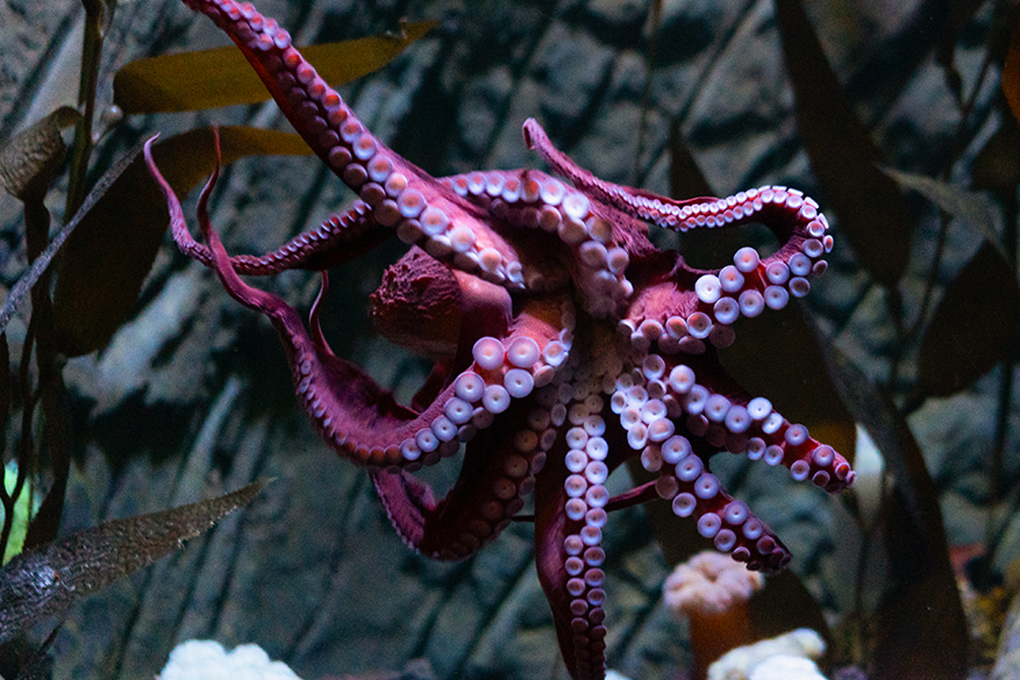Enteroctopus dofleini
Fast Facts
- An octopus appendage is called an arm, not a tentacle.
- Mature females have 280 suckers on each arm (2,240 suckers total). Males have fewer because there are only about 100 on the hectocotylus arm.
- Their suckers contain thousands of chemical receptors making them incredibly sensitive to touch and taste, used to grope for food in small crevices.
- The octopus has nine brains instead of one central nervous system.
- If you measure the space between the eyes of an octopus, that is about how big of a hole it can squeeze through.


Range
Pacific coast from Alaska to southern California

Habitat
Rocky shores, tide pools, and as deep as 1,650 feet

Size
Up to 30 feet across, weighing about 600 pounds

Nutrition
Shrimp, crabs, scallops, abalone, clams, and fish
Characteristics
They have eight long arms and—like most cephalopods—lack a shell or skeleton. The mouth, or beak, is the only solid part of the octopus’s body and is made of the same substance as the human fingernail: keratin. Giant Pacific octopuses have two powerful eyes, one on each side of their head, which provide extremely acute vision. Its pupils are horizontal rods. This species has three hearts: one for circulating blood throughout the body and two to pass blood over the gills to oxygenate it. They are best adapted to cold, oxygen-rich water.
Behavior
The Giant Pacific octopus changes colors by contracting skin cells filled with pigment. There are three sacks of pigment in each skin cell, one yellow, one red, and one brown. By mixing and matching the millions of pigment sacks, they can change to virtually any color they come across. They can also change their skin texture in order to blend into the most intricate surroundings. The Giant Pacific octopus hunts for food at night and has a lifespan of four years.
Reproduction
Males possess a modified sex arm called a hectocotylus that stores long ropes of sperm. During mating, he inserts the rope of sperm, called a spermatophore, into the female’s oviduct. The female lays 20,000 to 100,000 eggs in several strings, which she hangs in her den. She broods obsessively, cleaning and aerating the eggs and not eating until they hatch up to seven months later. Females die from a lack of nutrition shortly after the eggs hatch, and males die several months after mating.

